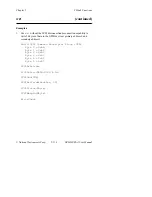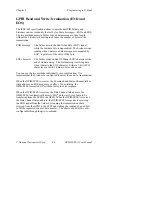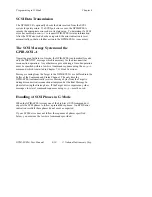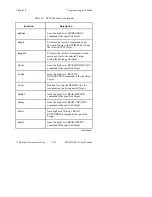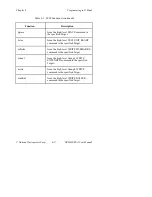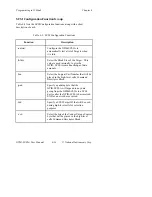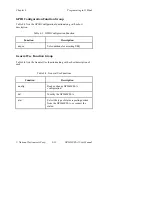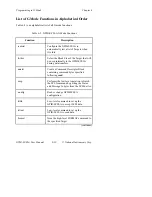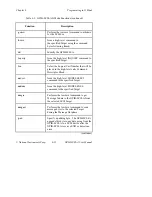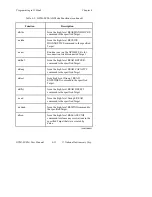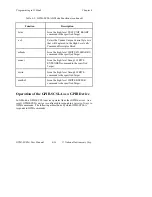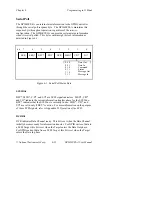
Programming in G Mode
Chapter 6
GPIB-SCSI-A User Manual
6-10
© National Instruments Corp.
SCSI Data Transmission
The GPIB-SCSI-A optionally checks the data received from the SCSI
system for parity errors. If a SCSI port error occurs, the GPIB-SCSI-A
records the appropriate error code in its status area. To determine if a SCSI
error has occurred, use
stat
to request GPIB-SCSI-A status information.
After the SCSI error code has been reported, the error indication is reset
automatically so that no further action to the GPIB-SCSI-A is necessary.
The SCSI Message System and the
GPIB-SCSI-A
Operating as an Initiator in G mode, the GPIB-SCSI-A automatically sends
only the IDENTIFY message which is necessary for the disconnection/
reconnection operation. Any other message sent during a G mode operation
must be specified within a low-level command sequence using the
msgout
command, which is detailed in Chapter 7, G Mode Functions.
Messages coming from the Target to the GPIB-SCSI-A are buffered into the
buffer of the Command and Status Channel. The only time the
GPIB-SCSI-A automatically receives Message bytes from the Target is
during disconnection/reconnection attempts and at the final Message In
phase following the Status phase. If the Target device requires any other
messages, low-level command sequences using
msgin
must be used.
Handling of SCSI Phases in G Mode
When the GPIB-SCSI-A issues one of the high-level SCSI commands, it
expects the SCSI phases to follow a prescribed sequence. An EPHS error
indication results if these phases do not occur as expected.
If your SCSI device does not follow the sequence of phases specified
below, you must use the low-level commands provided.
Содержание GPIB-SCSI-A
Страница 20: ......
Страница 27: ......
Страница 355: ...Appendix C Operation of the GPIB National Instruments Corp C 7 GPIB SCSI A User Manual Figure C 2 Linear Configuration ...
Страница 356: ...Operation of the GPIB Appendix C GPIB SCSI A User Manual C 8 National Instruments Corp Figure C 3 Star Configuration ...



